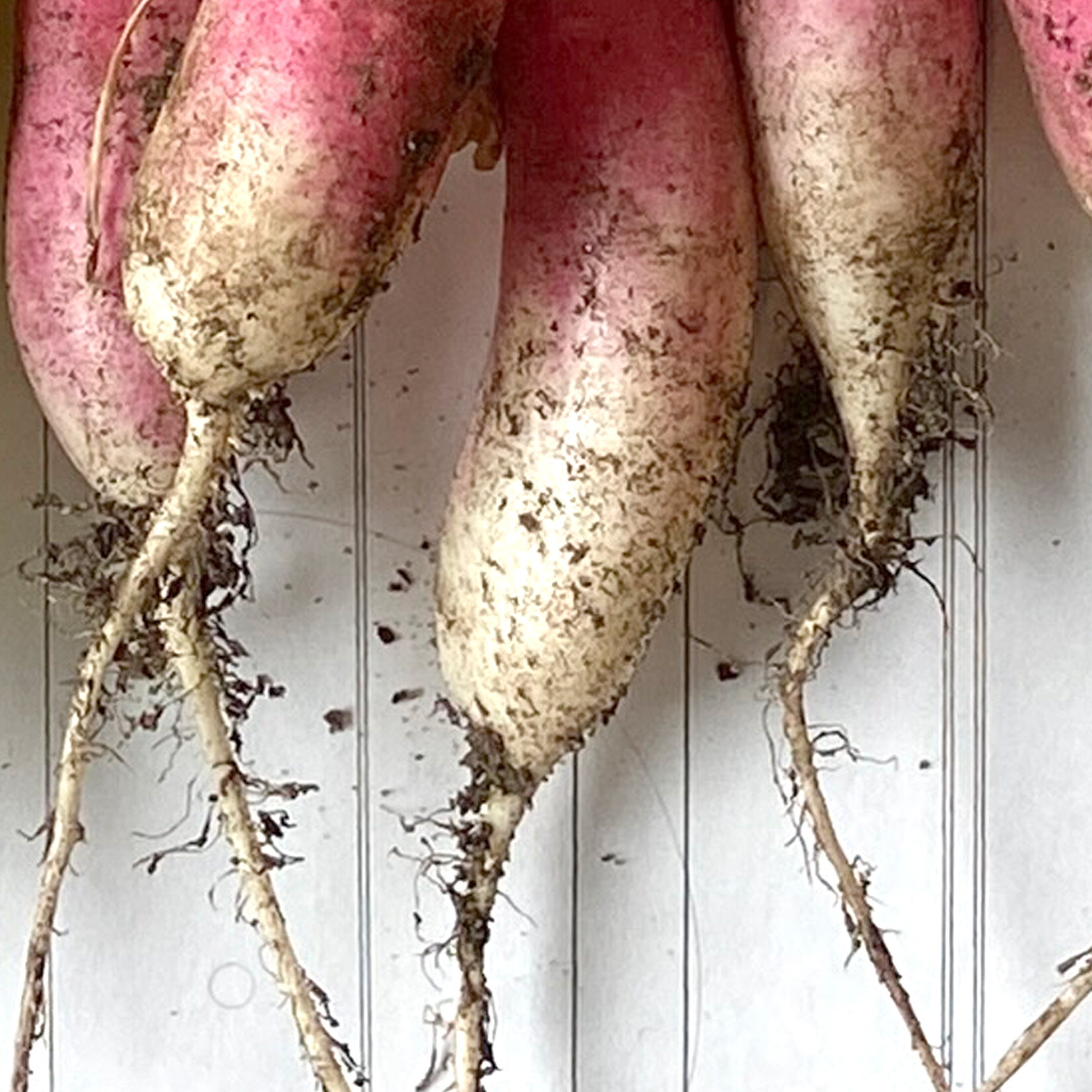To harvest a radish: A Conversation with Nadine Horton
Contributor
Commitment
To harvest a radish, gently tug at the base of its leaves, being careful to loosen its roots without breaking them. Kneeling by the raised beds that afternoon, our hands searched along the rows for their red tops. The radishes ready for harvest went in the shared basket for the gardeners to take home, but if a radish was not ready, and you managed to protect its roots, we put it back in the soil to keep growing. It takes time to grow. This semester, I have spent my Saturday afternoons harvesting plants alongside the other gardeners at the Goffe Street Armory Community Garden. We gather, work on the plants for a few hours, and share a meal as a weekly ritual. Many of us are transplants to New Haven, and perhaps we are searching for our own rootedness through gardening. Beginning a routine is often uncomfortable, but soon the body knows what to do. Nadine Horton has been gardening there for eight years, after she founded it with support from the New Haven Land Trust, and tends to the plants almost every day. These are some things she has learned.
JE
What has surprised you about working in the community garden?
NH
Coming into this with no growing experience, and not knowing anything more about vegetables other than that they were in the store, it was very interesting to see how important it is to be in the right conditions. I always thought that you needed a lot of space to grow. I thought of growing as like on a farm, because my dad grew up on a farm in North Carolina. It was a working farm and my grandma ran it. But growing in an inner city, what I’ve learned is you don’t need a lot of space. You do need access to water, sunlight, good seedlings, good plants, and basically that’s it. And the patience and the persistence to grow, that’s really all you need.
In terms of growing in an inner city environment—actually anywhere, but particularly in inner city—we had to depend on the city for the water, which we’re very grateful for, but when we didn’t have the water for three weeks, we were hindered in our growing so the weather plays a humongous part. It got really, really hot, so some things did not grow until very late. And our window is short, so if things didn’t bloom until June, maybe late June, we’re only going from that time to about October, end of October, so we don’t even get full growing time. All those things factor into a season when you’re dealing with different elements. [It] got really rainy [this year], so we didn’t have work some days, and some things just didn’t survive. The best thing you can do in a garden is adapt. You see what grew, what didn’t. You pay attention to the windows, and then you just take that and do different for the next garden.
JE
It is learning to cultivate that relationship with the garden.
NH
You have to. If you don’t learn from your garden, if you don’t learn what grows, where things like to grow, rotate around, find different spots, because everything doesn’t grow the same or sometimes things grow better when they’re in this place or that place, or getting this much sun or not as much sun. It’s all things you kind of learn as you go, but you have to pay attention. You kind of get into a relationship with the garden, where you know what will grow and what won’t. You also try new things, and then you see what works and what doesn’t. And then the garden will tell you. It will literally tell you. You just have to kind of pay attention and just go from there.
The growing season is over for the year, but to learn about the next season follow @armorycommunitygarden for updates and ask to be added to their mailing list.
